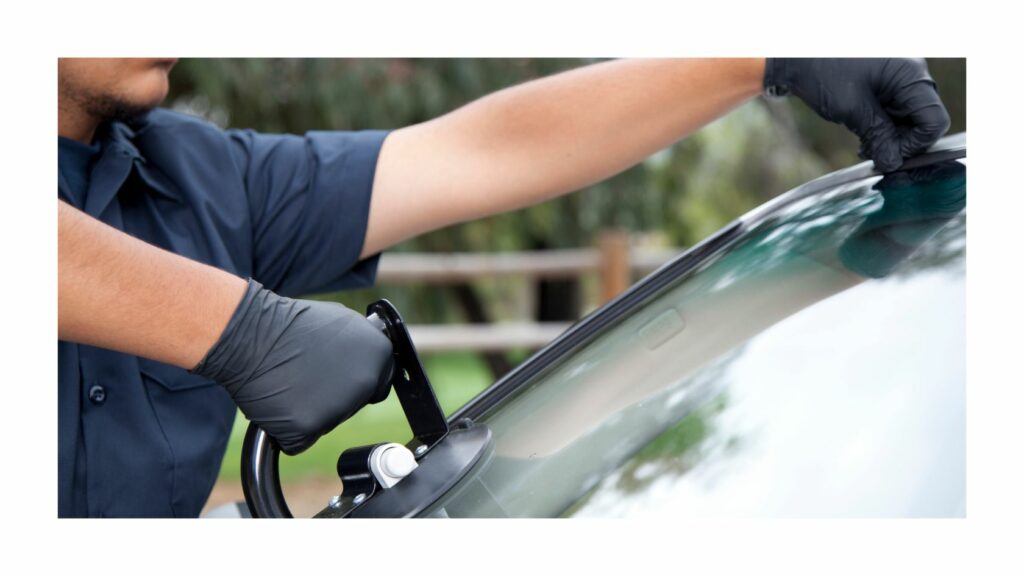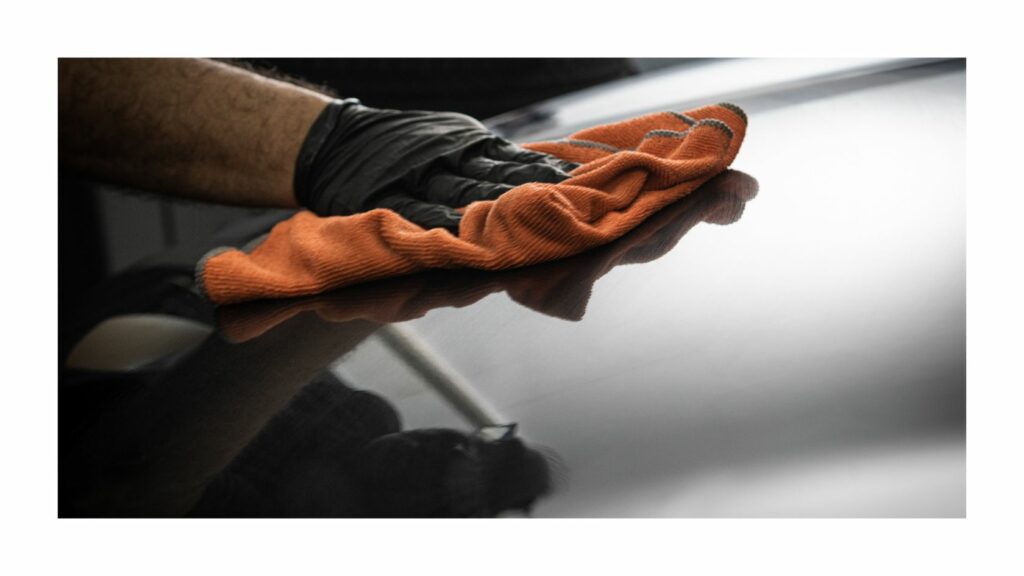
Blurry vision and glare are common issues on car windshields that most drivers encounter while driving. However, there is another vision-hindering problem often faced and ignored by motorists – distorted vision on car windshields!
So, what causes distorted vision and how you deal with it appropriately is the main topic of this blog post.
Is it improper installation of the windshield during initial setup or as an aftermarket solution? Or has it got something to do with your eyesight?
We will answer the above questions and explore the intricate details of windshield installation and its potential consequences.
We’ll also unravel other underlying factors contributing to your distorted vision, along with expert-backed windshield replacement strategies that will help you regain a crystal-clear view of the road. So, stay tuned till the end!
What is vision distortion on car windshields?
Distorted vision on car windshields refers to a visual impairment experienced by drivers when their windshield is compromised with some defects or issues, resulting in a distorted or unclear view of the road.
An example of distorted vision is watching objects moving or changing shape due to glass refraction.
Here is a short video of a distorted windshield in the form of refraction:
This phenomenon can occur due to various factors, such as improper installation during windshield replacement or initial manufacturing defects.
Optical aberrations, like astigmatism or lens distortion, may also contribute to this issue.
It is crucial to note that driving with a distorted view poses significant safety risks, as it affects your ability to assess distances accurately and identify potential hazards.
To tackle this problem, it’s important to be aware of the causes and promptly address them for a clear and safe journey on the road.
Causes of distorted vision on car windshields
A clear and unobstructed view through your car windshield is essential for safe driving, but at times, vision distortion due to the following causes can compromise this crucial aspect:
Manufacturing Defects – In rare instances, windshields may have inherent manufacturing defects that lead to imperfections in the glass.
These defects can cause slight distortions, affecting the driver’s ability to see the road clearly.
As an example, low spots difficult to wipe through windshield wipers after installation is a sign of a manufacturing defect causing warping or distortion.
While these occurrences are uncommon, they highlight the importance of quality control in windshield production.
Improper Installation of Windshields – The way a windshield is installed can significantly impact its performance. Improper installation may result from incorrect techniques, inadequate tools, or rushing through the process.

As a consequence, the windshield might not fit properly or may become misaligned, leading to distortions in the driver’s field of view.
For instance, if a windshield is not aligned with the vehicle’s frame during installation, it may cause a slight bending effect, making objects appear elongated or distorted.
Leaks on the Edges of Windshield – When the edges of a windshield are not sealed correctly, moisture can seep through, leading to leaks.
These leaks can introduce water between the layers of the glass, causing foggy patches and impairing visibility.
As a result of unsealed edges, water droplets may accumulate between the layers of the windshield, creating a blurry effect that hinders the driver’s sight during heavy rainfall.
Not Wearing Safety Gear – During windshield installation or replacement, technicians must adhere to safety protocols, including wearing proper protective gear.
Failure to do so might result in chemical exposure or injury, which can compromise the quality of the installation.
If a technician does not wear protective gloves while handling adhesive, the adhesive might come into contact with the skin and cause irritation, leading to improper application and distortions in the windshield.
Similarly, existing grease or oil from a technician’s hand can mix up with the adhesive which can later impact the clarity of the windshield.
Non-removal of Old Adhesive – When replacing a windshield, it is crucial to remove the old adhesive completely.
Neglecting this step may create gaps between the windshield and the vehicle frame, allowing air and moisture to penetrate, causing visual distortions.
If the old adhesive is not adequately removed, it might interfere with the bonding process of the new windshield, leading to visible distortions along the edges.
Grime or Debris on Windshield – Do not underestimate the impact of external factors like grime or debris on the windshield. More often these can obstruct the driver’s view and create distortions.
As an example, a layer of dirt or dust on the windshield can scatter light, causing glare and making it challenging to see the road clearly, especially during sunny days.
Related Read: How to reduce glare on your car windshield
Regular cleaning and maintenance are necessary to avoid this issue.
Low-Quality Aftermarket Windshield – Many glass manufacturing companies offer sub-standard windshields with uneven thickness, leading to inconsistent refraction of light and visual distortions.
Such windshields may not meet the necessary standards, resulting in subpar performance and potential distortions.
Opting for a low-quality aftermarket windshield might save money initially but can lead to long-term issues.
Eyesight Problems or Lens Issues – Sometimes, drivers may mistakenly attribute vision distortion to the windshield when the problem lies with their own eyesight.
Uncorrected eyesight problems such as astigmatism or lens issues in eyeglasses can make objects outside the car appear distorted.
For example, if a driver has astigmatism and does not wear corrective eyeglasses or contact lenses while driving, they may experience distorted vision, mistakenly attributing it to the windshield.
How to reduce distortion on car windshields?
Driving with a distorted view through your car windshield can be frustrating and hazardous. However, there are practical steps you can take to reduce or even eliminate this distortion and ensure a clear and safe driving experience.
Proper Installation and Repair
Ensure your windshield is installed correctly by qualified professionals. Some signs of incorrect installation are rattling noises, irregular patterns, and gaps in the frame.
Address any installation issues promptly, including leaks and gaps, which can lead to visual distortions.
Regular Cleaning
Keep your windshield clean from grime, dirt, and debris. Regularly wash both the interior and exterior of the glass to improve visibility.

Ensure using proper glass cleaning solutions rather than household items for cleaning. Avoid harsh chemicals and abrasive liquids.
Address Eyesight Issues
If you wear glasses, ensure your prescription is up-to-date and suitable for driving. Similarly, seek optical advice from professionals to correct any eyesight-related problems to avoid misconceptions about windshield distortion.
High-Quality Windshield
Invest in a high-quality OEM or certified windshield to ensure better optics and reduce the chances of distortion caused by subpar materials.
Be cautious about choosing aftermarket windshields, as they may not meet the same quality standards as OEM options, potentially leading to visual distortions.
Seek Professional Solutions
If you encounter any vision distortion on your windshield, consult a reputable auto glass expert for an assessment and appropriate solutions.
How to get rid of blurry car windshields?
Having a blurry car windshield can be not only annoying but also dangerous. To regain a clear view and ensure safe driving, follow these steps:
Clean Regularly – Regularly clean your windshield from grime, dirt, dust, smudges, and debris to prevent visual obstructions. Make sure to clean the inside and outside frame of the windshield which is often left on windshield wipers.
Address Chips and Cracks – Repair any chips or cracks promptly to prevent them from spreading and causing further distortion.
Check Wipers and Fluid – Ensure your wipers are in good condition and that your windshield washer fluid is topped up for optimal cleaning. If your wipers are worn out, replace them to maintain efficient wiping and improve visibility.
Final thoughts
Distortion on car windshields is a very common issue often underestimated by many motorists unless it leads to risky driving situations.
Understanding the causes of distorted vision on car windshields is crucial for maintaining safety and clarity while driving.
From manufacturing defects to improper installation, each factor can impact the driver’s view of the road and introduce potential risks.
Regular cleaning, addressing eyesight problems, opting for high-quality windshields, and seeking professional solutions are key steps to safeguarding visibility and promoting a secure driving experience.
By taking the knowledge and precautions from this post, you can confidently navigate the roads, ensuring a clear and unobstructed view of the world ahead.

